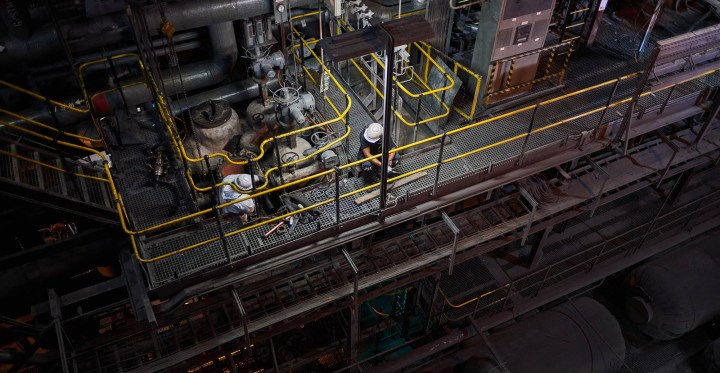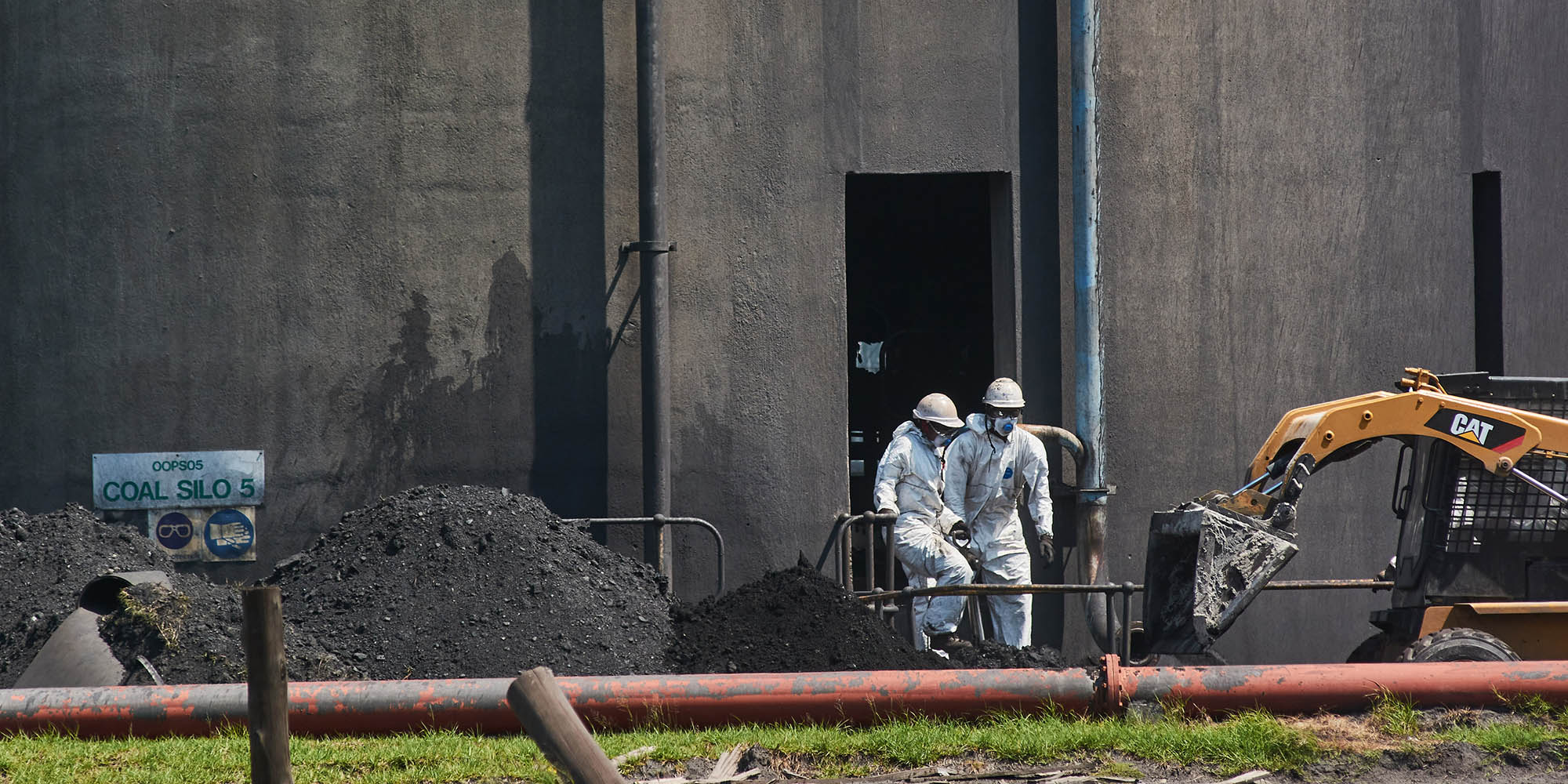ESKOM OP-ED
Keeping the lights on: A culture of maintenance is sorely needed by the custodians of public assets

Even as South Africa transitions to a low-carbon future, whatever the technologies employed, a culture of proper reliability maintenance of all plants — including coal-fired power stations, boilers and associated power generation equipment — is needed throughout the plant life cycle.
At the beginning of November, South Africa signed a landmark R130-billion deal with developed countries to support the country’s transition towards a low-carbon and climate-resilient economy.
While this is a critical and important step towards achieving a just transition to clean energy, as well as balancing the country’s energy mix, the immediate and urgent objective remains to keep the lights on in South Africa. To do this, utilities must work to ensure that their current energy infrastructure is secured and properly maintained throughout the plant lifetime.
Coal-fired energy still accounts for 83% of the country’s energy mix. Of Eskom’s 15 coal-fired power stations, 13 are at an average age of 42 years, with some needing to be decommissioned in the next few years. Old plants are unreliable and unpredictable and their performance is extremely poor. Nonetheless, they are critical to our ability to generate power and fuel the economy during the transition, so we need to urgently look at how to successfully maintain these key resources.
In order to explore the critical and ongoing role of reliability maintenance in energy generation, EE Business Intelligence invited key stakeholders — including Jan Oberholzer, COO of Eskom — and other experts in this space to a webinar to explore the challenges and solutions to the generation maintenance issues confronting Eskom and South Africa.

Workers carry out maintenance on coal silos at Eskom’s Tutuka coal-fired power station in Mpumalanga. (Photo: Waldo Swiegers / Bloomberg via Getty Images)
Other participants, besides Eskom, included Sasol, the Electric Power Research Institute (EPRI), a global non-profit that conducts research and provides global best practice in respect of electricity generation, energy economist Lungile Mashele, and original equipment manufacturers (OEM) like Babcock Ntuthuko Engineering and ACTOM John Thompson Boilers.
While Eskom requires maintenance across its plants and equipment, the webinar discussion focused on boiler tube failures, which are a major cause of downtime, outages and indeed load shedding. These failures are responsible for 2% of Eskom’s unplanned capability loss factor (UCLF). While 2% may sound small, it is in fact equal to two stages of load shedding. So, getting the maintenance and reliability of Eskom’s boilers right is critical.
So, how best to do this?
Focus on proper planning and work smart
Global best practice, according to EPRI, shows us that successfully maintaining a plant requires diligent focus and commitment to proper philosophy maintenance to address breakdowns when they occur, and prevent downtime risks by understanding the exact status of generation plants at all times, allowing the utility to predict where issues will arise in the future. This requires a combination of the right skills, availability of finances and proper planning.
The overall sentiment from experts was that if you do the right thing over a long period of time, you will get the right outcome. Sasol provided an excellent case study on maintenance of boiler tubes at its own boiler plants, using a smart maintenance platform which is driven and underpinned by solid real-time equipment monitoring data. Sasol’s Rightwell Laxa said we often overestimate what can be achieved in one year, while underestimating what can be achieved, through dogged perseverance and a data-driven approach, over three years.
Babcock Nthuthuko Engineering, the South African subsidiary of Babcock International, one of the world’s largest engineering, aerospace, defence and energy firms, was represented on the panel by Thava Govender. He believes that strong, long-term philosophy maintenance partnerships with utilities produces the best results as it allows for long-term planning, decisions and strategies that are rooted in evidence and data. These partnerships are based on long-term contracts that include incentive and penalty clauses that allow utilities to hold maintenance service providers to account for timeous and efficient delivery.
Unlock the money needed and use the right skills
An ideal reliability maintenance programme requires critical elements to be in place before it can be implemented. In short: finance, skills and spares. The experts emphasised that this is likely to take up to 24 months of planning, and should include available and dedicated funds in the bank, not just in the budget. One of the key headwinds facing Eskom is the lack of financial stability. Oberholzer said Eskom needed R11-billion a year to properly invest in a philosophy maintenance programme.
Energy economist Mashele said Eskom struggles to meet the threshold to receive affordable and sufficient funding from external lenders. Lenders have their own technical teams that look at a number of factors. The usual factors include commercial, financial and ESG (environmental, social and governance) requirements In addition, there are technical teams that look at maintenance spend and annual maintenance plans, energy availability factor (EAF), energy utilisation factor (EUF), capacity factor at a plant level, workforce including skills, unplanned capability loss factor (UCLF), planned capability loss factor (PCLF), the average age of the fleet and when units will be decommissioned, and the utility’s energy transition plans. Mashele said constant uncertainty about tariff increases and the ongoing decline in plant performance is unhelpful for lenders.
Mashele has been tracking Eskom’s maintenance programme spend for the past decade and believes it has been worryingly erratic since 2016, sending funders a red flag in respect of reliability. This year’s load shedding has been the worst yet and Mashele believes this is a direct result of low spending on maintenance over the course of a number of years.
Eskom set itself a target of one boiler tube failure per unit a year, but it is currently at 2.3 a year, and nothing is stopping this from escalating to as much as three by the end of the year.
Mashele said this is because the maintenance programme is ill defined, which is extremely concerning to funders who need greater clarity and certainty when it comes to maintenance investment. She also mentioned the importance of honing and retaining proper skills at the utility and believes it is important that Eskom develop solid partnerships with OEMs.
A key factor for a successful maintenance plan, including emergency, preventive and predictive measures, is to ensure that the right people with deep experience, expertise and knowledge of the plant systems are brought on board.

Workers pass coal storage silos at the Eskom Holdings SOC Ltd. Tutuka coal-fired power station in Mpumalanga, South Africa, on Thursday, Nov. 18, 2021. (Photo: Waldo Swiegers/Bloomberg via Getty Images)
Oberholzer conceded that Eskom had lost critical skills over the course of the past few years, but said it was prioritising funding, developing and retaining the technical and leadership skills required. Getting these skills into the utility, whether directly or through competent OEM partners, is essential if the maintenance programme is to work.
In their presentations, every speaker highlighted the importance of power plant operators partnering with OEMs. Oberholzer likened this to servicing a vehicle. If your Mercedes Benz breaks down, you’re going to be in trouble if you take it to a mechanic that has no knowledge of the car, or who will replace the parts with inferior parts, especially if they are not specifically designed for that vehicle.
What is clear is that Eskom needs to stick to a well-defined and ongoing philosophy maintenance plan, come what may. This will only happen when all parties, including government, the utility, private sector energy providers and OEMs pool their resources, expertise, experience, technology, innovation and skills. This will help save Eskom, and the country. DM
Chris Yelland is managing director of EE Business Intelligence.
[hearken id=”daily-maverick/8881″]





















 Become an Insider
Become an Insider
Great article, but it is (or should be) stating the obvious. The fact that it is even published is exactly the point. Partnering with REPUTABLE OEM’S and signing service level agreements will go a long way and hopefully cut out all these BBBEE middlemen who have NO CLUE about what they are buying and don’t care as long as they can make a quick buck!
Next, you have to convince the unions that no jobs are being stolen but rather created and maintained. If we don’t solve the problems at Eskom nobody will have a job.
De Ruyter and Oberholzer have a thankless job and they need our support both moral and financial otherwise they are doomed to the failure that the previous crooks would love to see.
Poor maintenance is only a symptom of malaise, it is not the cause of ESKOM’s problems. One can try to treat this symptom by putting in place all sorts of fancy protocols and schedules and by employing staff with the required skills, but it does not address the cause. I believe the root cause of ESKOM’s (and all other SOE’s) problems is that their boards are made up of political appointees who are answerable to . . . . . nobody. Perhaps they are answerable to the President, but he is too busy with all the other affairs of state to keep a close watch on each and every SOE. Poor Maintenance Mindset is just one of the casualties. So much better to manage ESKOM and ALL such SOEs with boards elected (AND financed) by the stakeholders – in the context of ESKOM from Agriculture, Mining, Industry, Commerce, Civil Society, ESKOM white collar engineers and ESKOM blue collar workers. The Government can keep abreast of developments by appointing (and financing) the Board Secretary. Thus every Board member would be answerable to his/her constituency and every constituency would have access to Board deliberations and decisions and would be able to check that an appropriate mentality of maintenance was in place; that any maintenance contracts were adequately defined and competitively priced. Without such boards ALL SOEs will continue to flounder from crisis to crisis. Bruce Danckwerts, CHOMA, Zambia
Was any mention made of Vice-president Mabuza’s recent comment that maintenance can’t be planned? It just happens.